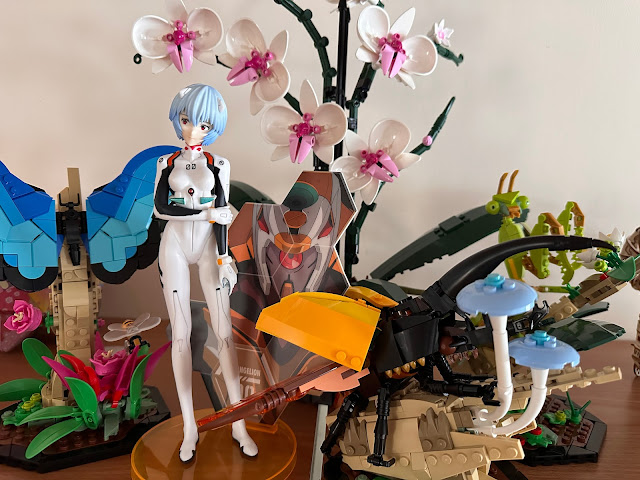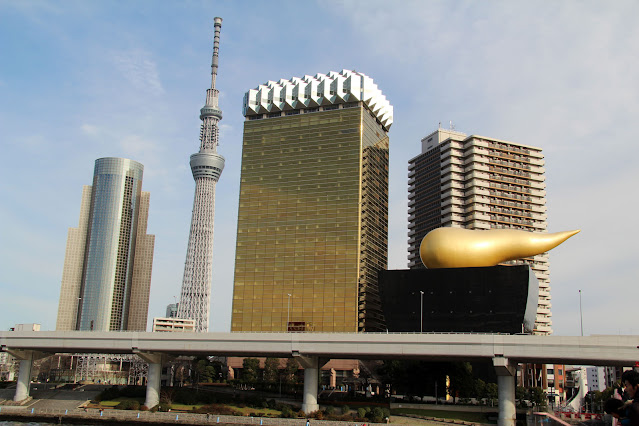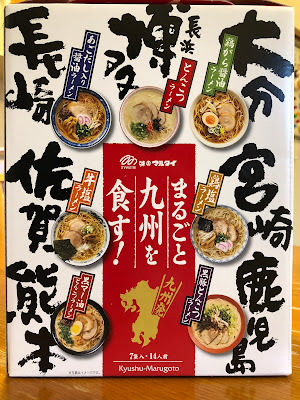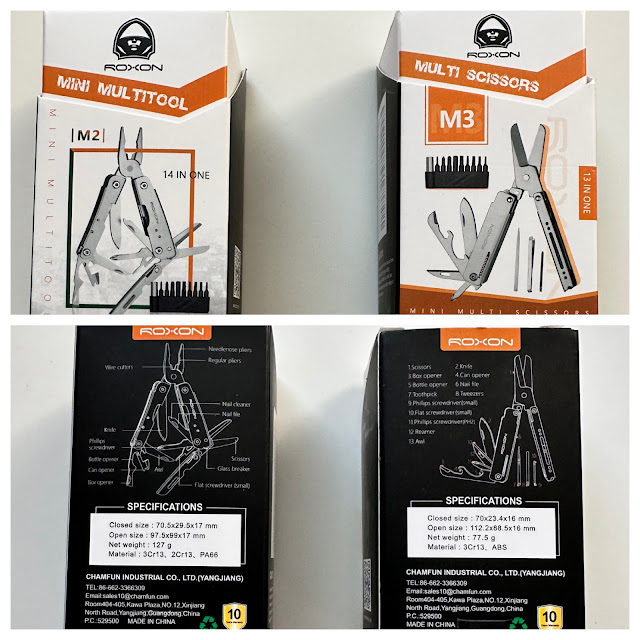Why Visit Japan - A Different Take on What To See and Do?
What kind of tourist are you? This affects the type of experience you are going to have in Japan and you need to think about what you really want to see and do. If you're a Japanophile, you'll already know your interests, but even if you do, what will you focus on. This article discusses aspects of what you should experience for five categories of visitors.
- Historian
- Shopper
- Foodie
- Explorer
- Anime / Science Fiction Fan
Basics For All Five Categories
The basics are all about enjoying Japan by being there and having some immersion into what Japanese people would take for granted. The joys of travel are about seeing and doing new things, and you are doing it in a foreign country.
- Bright lights, big city. Tokyo is a megopolis. It is huge. Any first time visitor to Japan should see Tokyo. Greater Tokyo (so large it has islands and mountain parks inside it) has 38 million people or 30% of the country's population. If you have never been to a big city, this is an easy place to start and be dazzled. There are so many shops, restaurants, parks, and attractions that you can only hit a limited set of highlights in a week. You will have to move fast to experience even this. Each of the major metro stations like Tokyo Station, Akihabara, Ueno, Asakusa, Shibuya, Shinjuku, Roppongi, Ginza, etc. are like an access point to a city of 1 or 2 million people. If you live in a city this size, how much of your city could you see in a day?
Many visitors to Japan go for 1 to 2 weeks (including me) and you can easily spend a week in Tokyo, Kyoto, and Osaka. If you were in Japan for 3 weeks for the first time, don't spend all your time on the train trying to see the country from end to end. Focus on the major things you want to see and do and be aware that 3 - 5 days is a minimum for each city - more for Tokyo.
An easier and cheaper trip to Japan for a week or two could have you stay in Tokyo and do a few day trips to places like Yokohama, Kamakura, Kawagoe, Enoshima, Mt. Takao by local train. No need for bullet trains and Japan Rail Passes. You don't even have to move hotels, but could once or twice if you really wanted to not travel across town or cities too often. - Enjoy being in Japan. Japan is a well developed nation with many amenities and traditions both old and new. As a visitor, you only have to see the best side of the country. Here are things that you should experience.
- Modern Subway/Train System. Ride a first class transit system with on-time trains and the ability to use transit to go to your destination without a car! Get a PASMO or SUICA card and ride the metro without having using paper tickets. You can also use these cards at many stores including konbini. The big train stations are like malls or are right under a mall, so you could spend a good chunk of the day there! Watch a tidal wave of workers at rush hour go to and from work at the major train stations. The train systems are some of the busiest in the world.
- Language Barrier. There is a lot of signage (especially for the trains) in English, but menus can be difficult so do ask for an English menu. Learn some basic Japanese to be polite and depend on the locals for kindness in helping a foreigner for many requests or tasks. Japanese is one of the harder languages to master and it has helped to insulate their culture, for good or bad. These days, the Japanese work force / population is declining, but unlike many other countries it is difficult to bring in foreign workers or immigrants due to the language barrier. Google Translate on your phone is your friend.
- Omotenashi. This is the Japanese word for providing quality hospitality and politeness for guests. You may experience this when a staff member or server goes out of their way to help you. Don't abuse it!
- Get an unlimited data plan for your visit via an ESIM. It is probably cheaper to get this than a regular plan at home! You'll need the data for maps, looking up info, and translation. This is way better than me using pay phones, paper maps, and getting lost on my first trip to Japan.
- Cleanliness and safety. The streets, train stations, and public spaces are very clean and tidy. Generally, you are very safe in most areas, especially if you stay on the main streets at night. Not like a lot of down towns these days. However, there are very few garbage cans unless you are in the malls or museum. You are expected to carry your trash with you until you can dispose of it.
- Food. You have all the tasty Japanese food you can eat. There are piles of casual restaurants, izakaya, conveyor belt sushi, even fast food that is only available in Japan. You don't have to break the bank to eat well and restaurants in general are of very good quality!
- Konbini and Convenience. This is the one of the hallmarks of modern Japanese culture. Convenience! Shopping and amenities are everywhere and the Japanese basically reinvented the convenience store (konbini). You can actually eat the food there without hesitation. From fried chicken, sandwiches (awesome egg salad), instant noodles to fresh salads. Plenty of tasty snacks too!
- Vending Machines. You can get hot or cold canned / bottled drinks easily in most places as these machines are everywhere! Vending machines are just handy to have around in train station platforms, in the park, etc.
- Lively Streets. You'll notice that the streets are have a constant stream of humanity. Everyone gets around on foot and by transit. This means that you will see a sea of umbrellas when it rains and street-level shopping and dining are quite alive and well. Watch the crowds pass through the famous Shibuya Crossing.
- Big Architecture. There are big buildings, mall complexes, and just impressive constructions everywhere. There are big underground malls and passages, to massive train stations and redevelopments like the Shiodome, Skytree, and Roppongi Hills. They are to be walked through.
- Cultural Attractions. You have both traditional arts and pop culture. I'm more into the pop culture myself including anime which is a multi-billion dollar industry. You can take in kabuki, sumo, karaoke, kodo drumming, etc. You can visit museums for art and artifacts from the past, and places like Akihabara and Nakano Broadway for anime.
- Finally, go see and do things you cannot experience at home. You might want to skip the Harry Potter Studio Tour in Tokyo if you live in the UK or you might skip Universal Studios in Osaka if you live in L.A. or Florida. Theme parks in Japan can be really crowded.
- Modern Subway/Train System. Ride a first class transit system with on-time trains and the ability to use transit to go to your destination without a car! Get a PASMO or SUICA card and ride the metro without having using paper tickets. You can also use these cards at many stores including konbini. The big train stations are like malls or are right under a mall, so you could spend a good chunk of the day there! Watch a tidal wave of workers at rush hour go to and from work at the major train stations. The train systems are some of the busiest in the world.
Historian
You are interested in history and pre-history. The feudal era of Japan is very cool with the Warring States period of samurai armies clashing and ninjas lurking in the background. There are many surviving castles that show off the mastercraft skill of Japanese woodworkers and stone masons. Unfortunately you won't find any in Tokyo as Edo Castle burned down in the 19th Century. For this you will need to travel around Japan. There are still towns that have kept a medieval feel to certain districts (e.g. Kawagoe), and there are many surviving shrines and temples. Kyoto has an amazing number of first class shrines and temples to visit.
Most of the cities have museums dedicated to the history of cities, buildings, and railways. The National Museum in Tokyo is a treasure trove of Japanese artifacts and art and not to be missed. Cities like Nara and Kyoto also have outstanding museums, shrines, and temples. Your feet will get tired walking and your eyes will water from looking at all of the beautiful and well crafted pieces of art. If you are into swords, there are many examples in museums and even a sword museum in Tokyo.
There are also hot springs resorts (onsen) that date back centuries to visit, historic towns, and archeological sites to visit, although that will require more travel around Japan. Japanese traditions and folklore would interest you too, so you may wish to take in some performances. There are many festivals would also interest you, so you might want to time your visit for some of these major events.
Shopper
There are deals to be had and merchandise that is exclusive to Japan. When I first went to Japan back in 2009 Japanese chain stores had not expanded overseas or were in the early stages. This meant that anything you bought in Japan was special. This isn't the case anymore. Stores like UNIQLO, MUJI, Daiso, and others could now exist in your city at home. There is usually more merchandise and some exclusive merchandise, but you need to be careful about what to buy if you can get it at home. This also goes for items like electronics, books, and other items. Many things can now be bought overseas or shipped, just make sure it is cheaper to buy in Japan. Books are a good example. They are heavy and books are not cheap in Japan either. Make sure what you buy can't be found on Amazon with free shipping for the same price as it would suck to bring heavy books back in your luggage that you could have obtained at home.
Look for local crafts and art pieces, and clothes from chains that are not found overseas. Don't forget to visit famous shopping streets in the various cities which often have small shops with local goods. An example of this is Nakamise Shopping Street, Asakusa, Tokyo where there are traditional Japanese souvenirs and snacks as you stroll through this historic shopping street leading to Senso-ji Temple. In Kyoto you have Nishiki Market which is a food and shopping extravaganza that offers a wide array of fresh produce, snacks, and local crafts. There are some malls in Ginza like Ginza Six or fancy shops in Ginza or Omotesando for more luxury goods too (not necessarily local).
Foodie
Your are going to be in paradise. There is delicious food everywhere. Tokyo has 203 Michelin starred restaurants of all types ranging from ramen, deluxe sushi, to elaborate kaiseki meals. You can easily break the bank here, but there are often long wait lines or reservations are needed in advance for many of the more popular and exclusive restaurants. If you're a foodie, you know this and will have made arrangements. For those of us who just want to eat good Japanese food you can check the department store food halls (usually in the basements), casual restaurants, restaurant chains, and even fast food. Not all good restaurants need Michelin stars. Try everything from Japanese fast food to higher quality restaurant meals as food quality is generally really good. Even typical Japanese food is going to be usually as good as the better Japanese restaurants in your city.
There are many Japanese restaurant chains that have good food at reasonable prices. There are chains like Nakau, Yoshinoya, Tendon Tenya, Sukiya, Matsuya, Coco Curry, Kura Sushi, Sushiro, Ootoya, Ichiran Ramen, etc. The list could go on and on. I don't usually eat the meals at konbini because I can eat at these chains to get better food, a place to sit, and enjoy a freshly prepared hot meal. They all have English menus too or the machines have an English option. If you run across a food court or restaurant floor in a mall, take advantage of it if you're hungry! Just be aware that some of these chains have also expanded overseas so you might not get something that is unique just to Japan.
Eating Well While Travelling In Japan
B-Kyu Food of Japan (aka Tasty Everyday Food)
Explorer
You want adventure, to get the blood pumping, and a challenge. Walking around and exploring cities isn't the most challenging or interesting thing for you - unless you're an urban explorer like me. I like looking in nooks and crannies, seeing interesting architecture and walking though it. Tokyo and most of the big cities have lots of urban exploring to do. There are many outdoors activities outside the cities to do too.
A few examples of outdoors type activities (some of these are difficult) include:
- Embark on a hike up Mount Fuji or simply enjoy the breathtaking views of Japan's iconic and highest peak.
- Walk the scenic Magome and Tsumago trail, an old postal route in the Kiso Valley, surrounded by lush landscapes and preserved Edo-period architecture.
- Hike the Japanese Alps through hiking trails like the Kamikochi region, offering stunning landscapes and picturesque views.
- Do part of the Shikoku Pilgrimage, visiting the 88 temples associated with the Buddhist monk Kukai, exploring the rural beauty of Shikoku Island.
- Bicycle the 70 km Shimanami Kaido road that connects Honshu (Japan's main island) to the island of Shikoku. There's a lot of elevation (up and down) as you cross between six small islands in the Seto Inland sea on bridges that are high enough for ships to pass under!
Anime / Science Fiction Fan
I actually fall into this category and dabble in all of the others. I originally went to Japan in 2009 to see what the homeland of anime was like. I fell in love with the country and have been there six times. Even the anime scene has changed quite a bit since then. Back in 2009 it was less big business and more homegrown. There are a major chain stores now and many more anime related events/promotions in the country now. Back then, a huge event was the Evangelion Lawson store in Hakone. It was special then, but more mundane now. The types of anime that are popular have changed quite a bit too over the years as isekai anime are now super popular.
Japan has created many of the most popular cartoons (aka anime) and video games of all time. You can do anime pilgrimages where you visit the real world locations anime are set in, and definitely will visit Otaku meccas like Akihabara and Nakano Broadway. Some popular phenomena like Pokemon are old enough now to be nostalgic for the first generation of western fans who played them 25 years ago as kids. Robotics and seeing giant robot statues are a big draw for Gundam fans too. There is a lot of advanced technology in Japan used in everyday life, and science fiction fans would appreciate many of the items I've talked about for trains (like the driverless Odaiba monorail), bullet trains, vending machines, robots, arcades, and techie modern buildings. Even conveniences like conveyor belt sushi and konbini are scifi-like.
 |
| Gundam |
 |
| Themes: Anime in the Rei Ayanami figure, models in the form of the character and bug figures, and bugs which feature richly in Japanese childhood, traditional culture, and pop culture. |
 |
| Pokemon |
Follow me on Twitter or Instagram at @Tostzilla or my feedburner.
More snacks, ramen and Japanese pop culture.
















Comments
Post a Comment